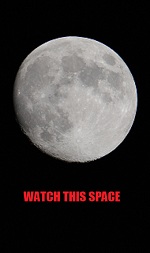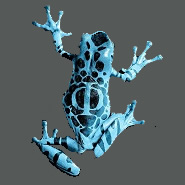 Marvin will be well pleased. He was so excited when he found out he was needed in Hollywood that he forgot his teapot, and it was lost all those years, until a cute little robot landed and started driving around, and just happened to do so right where he left it.
Marvin will be well pleased. He was so excited when he found out he was needed in Hollywood that he forgot his teapot, and it was lost all those years, until a cute little robot landed and started driving around, and just happened to do so right where he left it.
Seriously, now, the picture on the right is a Mars Pathfinder mission image by the JPL team. It’s a very tight crop within the full image, which is a composite of several individual pictures. Spotted long ago by Tim Beech, one of the original investigators of Martian photographic anomalies, it shows an object that resembles for all the world the classic spout of an English teapot, ready to pour a little cheer into our lives. This particular teapot spout, however… I am currently thinking… is another in a series of Martian critters, yes, I’m talking an animal, coming out of it’s lair to scope out the surrounding area for a bit of a snack. This view is primarily based on its shape, its relationship to the “rock” immediately to its left and on the marked dissimilarity to anything else in the entire image.
 The larger version on the right is a levels enhancement by myself, to make the scene appear more natural, lighting-wise, not that it doesn’t pop right out at you in the image above. [Levels refer to the reaction of the imaging software in displaying the brightness level of any particular pixel, i.e. a certain value in the original data is output at the same, a brighter, or a darker level. Therefore the overall image ratios remain the same, as long as there is image data in a given pixel.] Clicking either image will take you to the original composite shot.
The larger version on the right is a levels enhancement by myself, to make the scene appear more natural, lighting-wise, not that it doesn’t pop right out at you in the image above. [Levels refer to the reaction of the imaging software in displaying the brightness level of any particular pixel, i.e. a certain value in the original data is output at the same, a brighter, or a darker level. Therefore the overall image ratios remain the same, as long as there is image data in a given pixel.] Clicking either image will take you to the original composite shot.
Do you think a rock could have eroded into that shape? I don’t. As always, your comments are most welcome. I am highly opinionated, it’s true, but I am also highly open-minded.
As for the “rock” immediately to the left, it could be a rock that it’s using as a shelter, or it could be a shell. The smaller triangular-roofed “shell” that’s just a touch closer to us could be a fellow creature’s lair, as it has the same shape as the object our pal is peeking out from.
I don’t know, but that’s what I think of this bit of evidence… you must decide for yourself what you think it might be. We all want to see life running around in these images from space… I posit that that’s exactly what we’re looking at here.



































 What’s All This, Then? is copyright © 2009 to the present by Ignatius F Makarevich - All rights reserved worldwide.
What’s All This, Then? is copyright © 2009 to the present by Ignatius F Makarevich - All rights reserved worldwide.



I think the “spout” of the “teapot” is really a pointy rock at an angle in the foreground, and another rock in the background. The black “orifice” of the spout is really just a shadow like all the other black shadows in the photograph.
Cute photo though.
That’s a possibility. The image is very small in the overall collection of frames, so you could well be right, Paul. Indeed you could be… However… in vetting it for publication on WATT, enhancing it, trying to make it fall apart, looking at it in many ways before making the mild non-destructive enhancement presented here, it certainly does appear to be one piece. The shadow on the ground speaks to that as well.
I suggest people try it on their own and see for themselves. No data relationships are altered here… it is as it exists in the original science data. If you want to try it out, rather than a cursory view with an eye to, “it can’t be because [insert pet dogma]”, then by all means click either picture, download the original and have at it.
There is much false dogma officially presented ad infinitum to the public, from making everything orange-red when it’s not (they even do it to Hubble imagery) to the hogwash about temperatures – it is 90 degrees Fahrenheit at the equator… this fact regularly recorded by the instrumentation on site… people really need to be able to see behind the hype. Is there no real curiosity left?
[…] not from around these parts, West Virginia is not all that big. We have more data on the Moon, Mars, Mercury and Enceladus that we do for our own […]
[…] An old post of mine: Hey, Marvin, We Found Your Teapot. […]